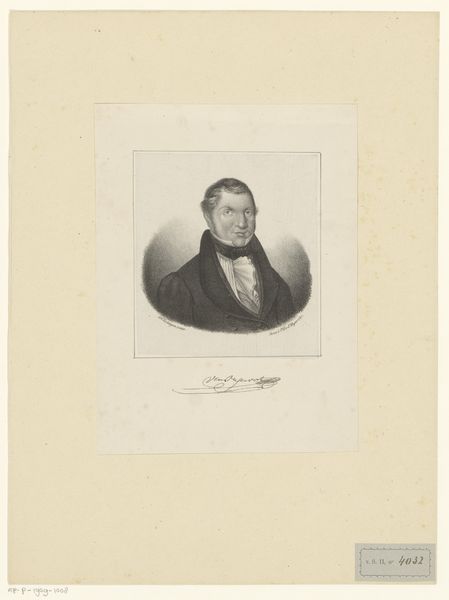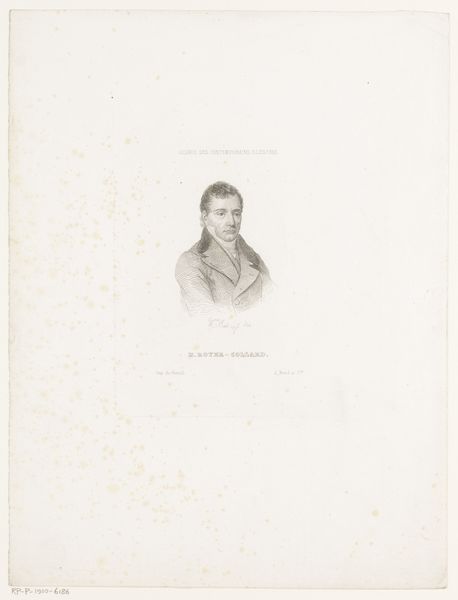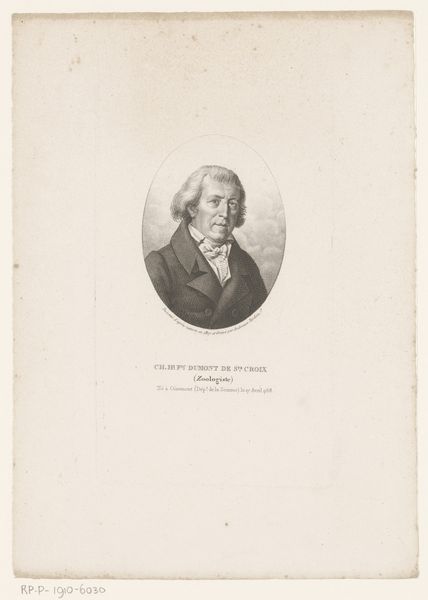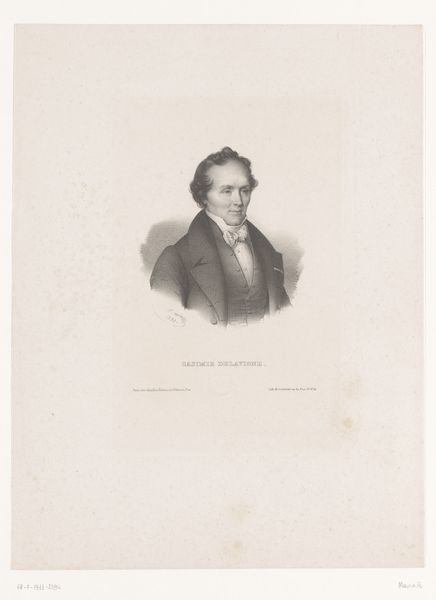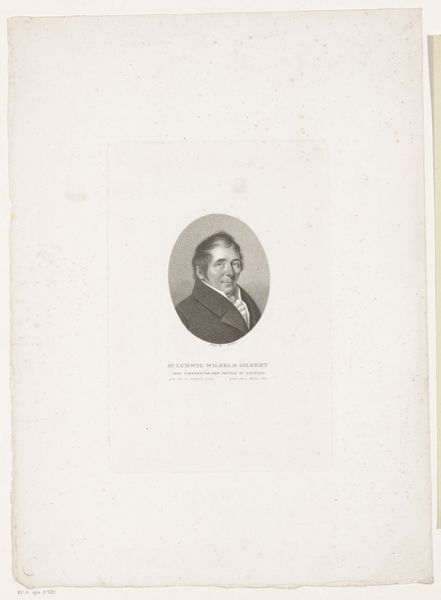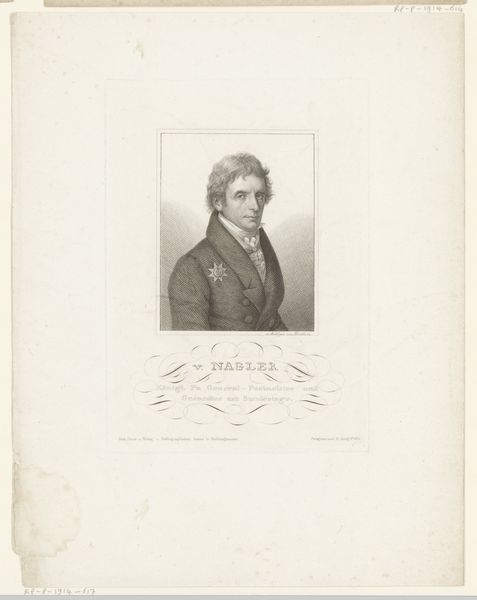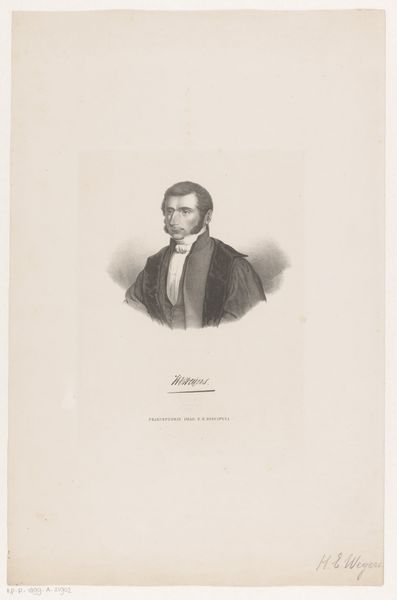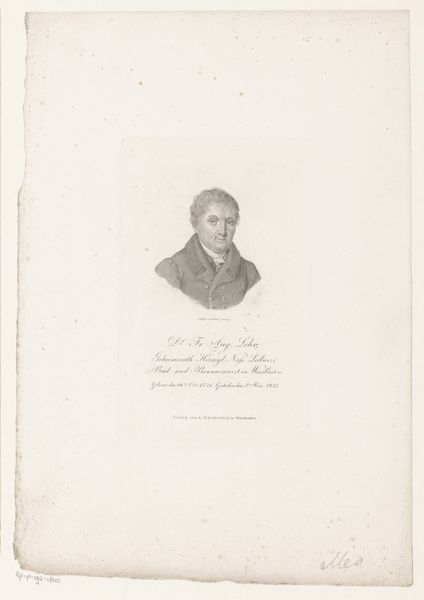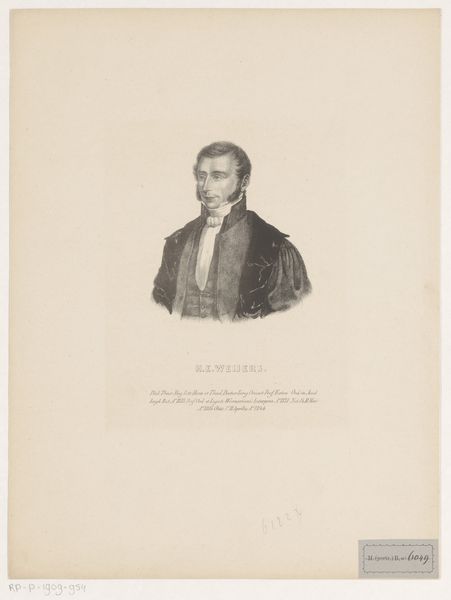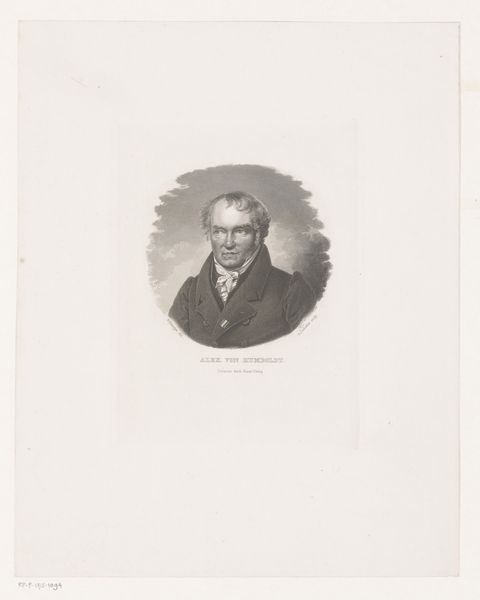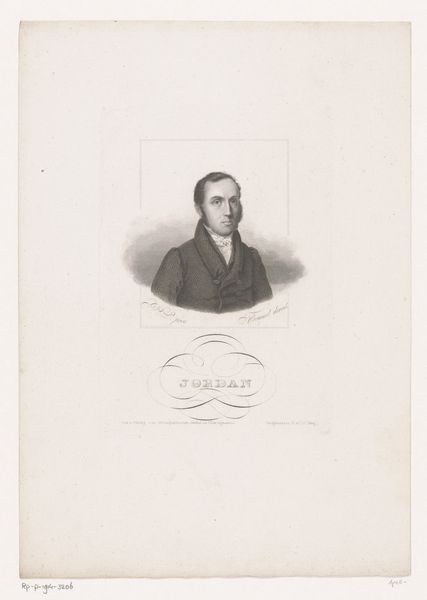
paper, engraving
#
portrait
#
neoclacissism
#
aged paper
#
16_19th-century
#
light coloured
#
paper
#
19th century
#
engraving
Dimensions: height 199 mm, width 130 mm
Copyright: Rijks Museum: Open Domain
Editor: Here we have Ambroise Tardieu's "Portret van Pierre Louis Antoine Cordier," an engraving from 1825 rendered on paper. The light and shadow give it a somber, almost serious tone. How would you interpret its visual composition? Curator: Immediately, the tight oval framing focuses attention intensely on Cordier's face and shoulders. Note how the stark contrast emphasizes the textures of his jacket and cravat, creating a dialogue between line and form. What I find interesting is the seemingly clinical approach to portraiture—typical of neoclassical aesthetics—that renders his features with almost scientific precision. Editor: Clinical? Do you mean objective, devoid of emotion? Curator: Precisely. The linear precision eschews subjective expressiveness for clarity of form. Observe how each line, each stippled area, contributes to the overall structure. Even the text beneath functions as a design element, balancing the composition. How do you view the impact of the engraving technique itself? Editor: It seems perfect for this era, with the emphasis on clean lines to describe shape, form, and texture with limited tonality, fitting very nicely into that Neoclassical movement you described. Is the emotional tone purely created through light, shade and the subject's facial expression? Curator: Partly. Light and shadow modulate form and imbue the subject with a sense of depth. His gaze, while direct, lacks overt emotionalism. Instead, a stoic reserve communicates an intellectual rather than a sentimental quality. This coolness is what generates what you perceive as 'somber', which comes from the very formal organisation of its shapes. Editor: I see now. Looking closely at the structural elements, such as shape and light distribution, reveal a carefully planned presentation of Pierre Cordier’s profession and status, more than emotional reflection. Curator: Precisely. And understanding the structures informs our understanding of its artistic choices.
Comments
No comments
Be the first to comment and join the conversation on the ultimate creative platform.

